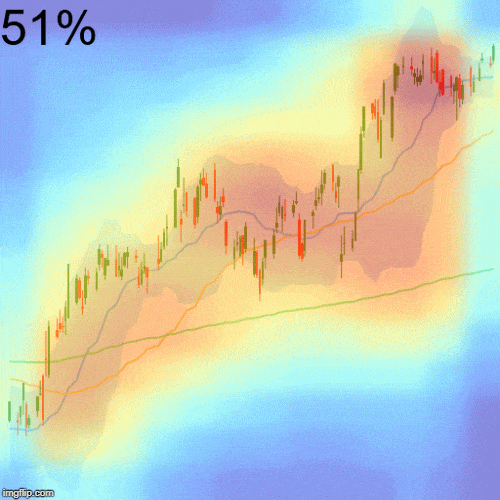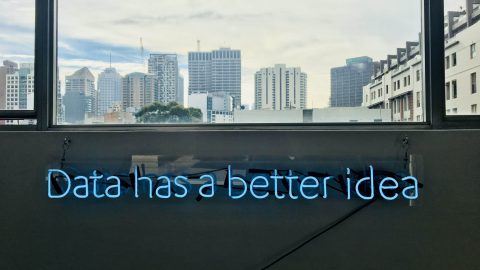Tesla’s autopilot can detect road signs, pedestrians and other vehicles with the help of cameras installed in the vehicle. The key to this lies in computer vision, a special field of machine learning. The EAM has used this technology to create the world’s first virtual chart analyst.
I’ll believe it when I see it…
To recognize things visually is one of the first skills that humans learn. Although the processing of visual stimuli plays an important role in our lives, it often seems self-evident to us. In 1996, a computer was able to defeat a human in chess for the first time, but it was only later that machines “saw the light of day”.
Today, powerful processors and a flood of visual training data enable machines to recognize objects quickly and react at lightning speed, which pays off especially with autopilots and manufacturing robots.
Chart analysis – a dying art?
With the increasing quantification of the financial sector, chart analysis, one of the oldest tools for investment decisions, became less and less important. The basic assumption of chart analysis is that market prices are largely dependent on the moods of market participants, which manifest themselves in patterns in price charts.
In addition to a large number of patterns, the chart analyst’s intuition plays a major role in ensuring that prices are correctly forecast. As with a good craftsman, intuition is a skill that must be laboriously acquired over a period of years, unless you are a machine…
The world’s first virtual chart analyst
In consultation with a human chart analyst and with the help of about one million charts of stocks from the S&P 500 Index, Erste Asset Management trained the world’s first virtual chart analyst. A new algorithm developed by Google was used, which is based on deep neural networks and is also used in self-driving cars. The virtual analyst can be fed stock charts and, in addition to the probability of a positive future price trend, also provides a picture in which the forecast is “justified”.
Initial tests of the system delivered promising results.

Note: Dynamic analysis of the chart image from Apple. The number in the upper right corner indicates the probability of a positive return. Red areas indicate a positive development, blue areas a negative one. Note: Past performance is not indicative of future development. (Source: Erste AM)
Man vs. Machine?
The question arises as to whether machines will be able to make independent investment decisions in the future. With the current state of the art, this is not the case in the foreseeable future, since in addition to chart analysis, a large number of factors influence investment decisions that are difficult to automate.
However, robots such as the virtual chart analyst will certainly serve as a tool for human decision makers in the future. In order to be able to consider the individual needs of each customer in investment advice, a human contact person will continue to be necessary in the future.
Legal note:
Prognoses are no reliable indicator for future performance.
Legal disclaimer
This document is an advertisement. Unless indicated otherwise, source: Erste Asset Management GmbH. The language of communication of the sales offices is German and the languages of communication of the Management Company also include English.
The prospectus for UCITS funds (including any amendments) is prepared and published in accordance with the provisions of the InvFG 2011 as amended. Information for Investors pursuant to § 21 AIFMG is prepared for the alternative investment funds (AIF) administered by Erste Asset Management GmbH pursuant to the provisions of the AIFMG in conjunction with the InvFG 2011.
The currently valid versions of the prospectus, the Information for Investors pursuant to § 21 AIFMG, and the key information document can be found on the website www.erste-am.com under “Mandatory publications” and can be obtained free of charge by interested investors at the offices of the Management Company and at the offices of the depositary bank. The exact date of the most recent publication of the prospectus, the languages in which the fund prospectus or the Information for Investors pursuant to Art 21 AIFMG and the key information document are available, and any other locations where the documents can be obtained are indicated on the website www.erste-am.com. A summary of the investor rights is available in German and English on the website www.erste-am.com/investor-rights and can also be obtained from the Management Company.
The Management Company can decide to suspend the provisions it has taken for the sale of unit certificates in other countries in accordance with the regulatory requirements.
Note: You are about to purchase a product that may be difficult to understand. We recommend that you read the indicated fund documents before making an investment decision. In addition to the locations listed above, you can obtain these documents free of charge at the offices of the referring Sparkassen bank and the offices of Erste Bank der oesterreichischen Sparkassen AG. You can also access these documents electronically at www.erste-am.com.
Our analyses and conclusions are general in nature and do not take into account the individual characteristics of our investors in terms of earnings, taxation, experience and knowledge, investment objective, financial position, capacity for loss, and risk tolerance. Past performance is not a reliable indicator of the future performance of a fund.
Please note: Investments in securities entail risks in addition to the opportunities presented here. The value of units and their earnings can rise and fall. Changes in exchange rates can also have a positive or negative effect on the value of an investment. For this reason, you may receive less than your originally invested amount when you redeem your units. Persons who are interested in purchasing units in investment funds are advised to read the current fund prospectus(es) and the Information for Investors pursuant to § 21 AIFMG, especially the risk notices they contain, before making an investment decision. If the fund currency is different than the investor’s home currency, changes in the relevant exchange rate can positively or negatively influence the value of the investment and the amount of the costs associated with the fund in the home currency.
We are not permitted to directly or indirectly offer, sell, transfer, or deliver this financial product to natural or legal persons whose place of residence or domicile is located in a country where this is legally prohibited. In this case, we may not provide any product information, either.
Please consult the corresponding information in the fund prospectus and the Information for Investors pursuant to § 21 AIFMG for restrictions on the sale of the fund to American or Russian citizens.
It is expressly noted that this communication does not provide any investment recommendations, but only expresses our current market assessment. Thus, this communication is not a substitute for investment advice.
This document does not represent a sales activity of the Management Company and therefore may not be construed as an offer for the purchase or sale of financial or investment instruments.
Erste Asset Management GmbH is affiliated with the Erste Bank and austrian Sparkassen banks.
Please also read the “Information about us and our securities services” published by your bank.

